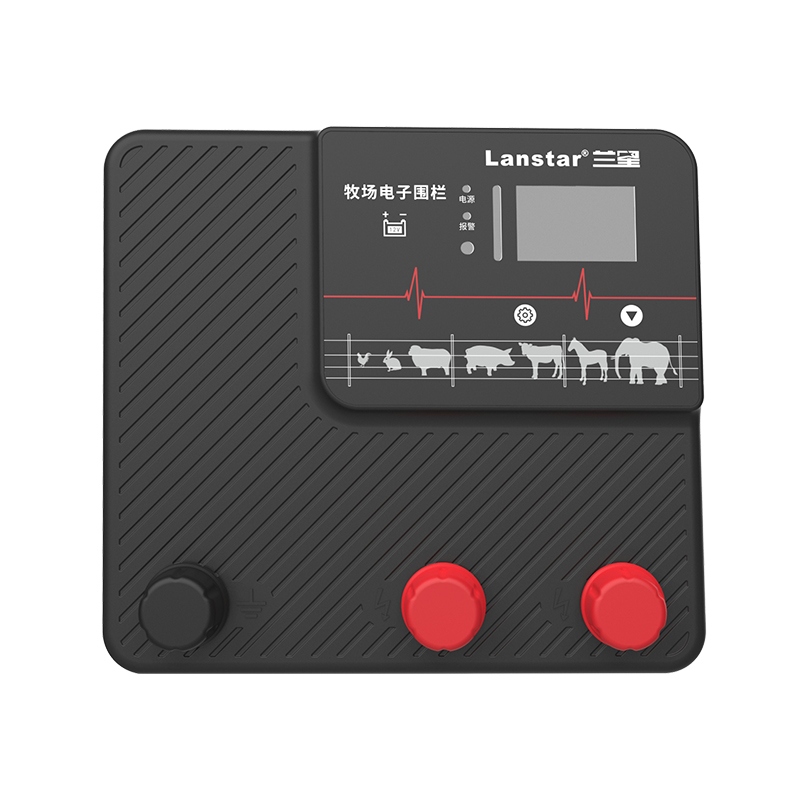
Every Alarm Is a Guardian: The Pasture Security Philosophy Behind Electronic Fences
Publish Time: 2025-08-19
Across the vast grasslands and pastures, the sound of the wind, the rustling of grass, and the lowing of cattle and sheep form a melody interwoven with nature and livelihoods. However, a sudden intrusion, an attack by a wild animal, or a moment of carelessness leading to loss can all undo a rancher's hard work. The advent of electronic fences is more than just an "invisible wall"; it redefines the very essence of pasture security—from passive defense to active protection, from physical isolation to intelligent symbiosis.I. The "Security Dilemma" of Traditional Pastures: The Dual Challenges of Natural Risks and Human LimitationsFor thousands of years, pasture security has relied on a combination of human and physical defense: herders on horseback patrols, barbed wire demarcating boundaries, and sheepdogs assisting in herding. However, these methods are gradually becoming increasingly limited in modern ranches:High labor costs: Large ranches often span thousands of acres, making manual patrols inefficient. Risks are exacerbated at night and during extreme weather conditions.Physical fences are fragile: Wire mesh can be easily damaged by wind and snow, collided with by wild animals, or even become loose and ineffective due to trampling by cattle and sheep.Response delays: After a boundary violation or intrusion occurs, it often takes hours to detect, and the damage is irreversible.The advent of electronic fencing is essentially a rethinking of "safety": rather than attempting to "fight" nature, it uses technology to detect risks, provide early warnings, and minimize harm, shifting safety from "after-the-fact remediation" to "preventive" action.II. The "Safety Philosophy" of Electronic Fencing: A Triple Logic Reconstructs the Pasture Protection System1. Softening and Strengthening Boundaries: From Physical Barriers to Intelligent PerceptionTraditional fences use wire or fencing to define "hard boundaries," but electronic fences achieve "soft boundaries" through virtual cordons (e.g., GPS positioning, infrared/radar sensing):Flexible Adjustment: The boundary can be modified at any time based on the season and pasture rotation needs, avoiding resource waste.Undetectable Penetration: Legal passage is permitted for herders and vehicles, but illegal intrusions (such as cattle, sheep, or wild animals) trigger an immediate alarm.Environmental Adaptability: Resistant to wind and sand, cold temperatures, and waterproof and lightning-resistant, the system is suitable for extreme environments such as grasslands, mountains, and deserts.Case Study: After implementing electronic fencing on a ranch, the rate of cattle and sheep crossing the boundary decreased by 90%, while also reducing pasture damage caused by traditional fence maintenance.2. The "Temperature" of Alarms: From Mechanical Rings to Humanized ResponsesElectronic fence alarms are more than just a long beep; they're a fully intelligent decision-making system:Graded Warning: Different levels of alerts are sent based on the risk type (e.g., cattle or sheep approaching the boundary, wolf packs invading);Linked Action: Automatically triggers floodlights and bird scarers, or integrates with drone inspections and sheepdog tracking devices, forming a closed loop of "warning-response-action";Data Accumulation: Records the time, location, and cause of each alarm, providing a basis for optimizing grazing routes and predicting risks.Philosophical Insight: The essence of alarms is "respect for life"—they not only serve as a reminder to herders, but also use technology to reduce animal stress, mitigate wildlife conflicts, and achieve harmonious coexistence between humans and nature.3. Energy Self-Consistency: From Grid Dependence to Coexistence with NatureRemote ranches often face power supply challenges. Electronic fences achieve "uninterrupted power" through a combination of low-power design and renewable energy:Solar Power: Combined with high-capacity batteries, it enables 24/7 operation and can operate for over 15 days even in continuous rainy weather.LoRa/NB-IoT Communication: Ultra-low-power wide-area network technology ensures signal coverage of tens of kilometers while reducing data transmission energy consumption.Modular Design: Sensors and controllers can be independently replaced, extending device lifecycles and reducing electronic waste.Metaphor: The energy self-consistency of the electronic fence is like a contract between the ranch and nature—it utilizes natural resources like sunlight and wind, providing maximum protection with minimal intervention.III. Future Pastures: When Electronic Fences Become "Ecological Interfaces"The ultimate value of electronic fences lies not in what they enclose, but in what they connect:Connecting to animal health: Sensors on the fence monitor the body temperature and activity levels of cattle and sheep, providing early warnings of disease or estrus;Connecting to pasture ecology: Integrating soil moisture and vegetation coverage data to optimize rotational grazing plans and prevent overgrazing;Connecting to the carbon trading market: Accurately recording pasture carbon sequestration data to support "carbon-neutral pasture" certification.Conclusion: Safety is the bottom line of pastures and the dignity of life.Behind every alarm is technology's reverence for nature, its protection of life, and its appreciation for the hard work of herders. Electronic fences are more than just a "wall"; they embody a safety philosophy—they use intelligence to mitigate risks and warmth to instill trust, allowing pastures to maintain the poetic and tranquil atmosphere of "the wind blowing through the grass, revealing cattle and sheep" amidst the tide of modernization.


